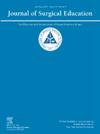How Informed are Visiting Medical Students? A Content Analysis of Online Information Regarding Plastic Surgery Away Rotations
IF 2.1
3区 医学
Q1 EDUCATION, SCIENTIFIC DISCIPLINES
引用次数: 0
Abstract
Objective
Given the importance of away rotations for students to learn about programs through direct experience and for programs to evaluate applicants, this study aims to characterize plastic surgery residency program website and VSLO content for away rotation information.
Methods
All website and VSLO plastic surgery away rotation listings were assessed for information regarding the rotation application process, logistics, and details. Chi-Squared and Fisher’s Exact testing were used to compare comprehensibility by program characteristics including the residency model, program size, age, amount of funding, Doximity ranking, and number of Instagram posts and followers. McNemar testing was used to compare program information between websites and VSLO.
Results
About 104 residency programs were identified, with 85.6% listing information on their websites and 76.0% on VSLO. Information regarding rotation applications, logistics, and details, is listed on 87.6, 85.4%, and 71.9% of websites and 100.0%, 100.0%, and 68.4% of VSLO pages. VSLO had significantly more information on the application process and rotation logistics than program websites (p ≤ 0.004), while program websites had more rotation descriptions (p = 0.003), information on call schedules (p = 0.011), presentations (p = 0.036), and simulation opportunities (p = 0.008). Independent programs were significantly less likely to provide online information on their rotations (p < 0.001).
Conclusions
While most programs included information about their away rotations on websites or VSLO, the degree and content of this information is highly variable by program and between platforms. Improving the comprehensibility, accessibility, and consistency of online plastic surgery away rotation listings will benefit students and programs in better matching applicants to well-fitting programs.
访问医学院的学生了解情况如何?关于整形手术轮转的在线信息内容分析
目的考虑到客场轮转对学生通过直接经验了解项目和项目评估申请人的重要性,本研究旨在描述整形外科住院医师项目网站和VSLO内容的客场轮转信息。方法对所有网站和VSLO整形外科轮转列表进行评估,了解轮转申请流程、物流和细节信息。使用Chi-Squared和Fisher’s Exact检验来比较项目特征的可理解性,包括住院医师模型、项目规模、年龄、资助金额、邻域排名、Instagram帖子和关注者数量。McNemar测试用于比较网站和VSLO之间的节目信息。结果共确定了104个住院医师培训项目,其中网站信息占85.6%,网站信息占76.0%。关于轮岗申请、物流和细节的信息分别列在87.6、85.4%和71.9%的网站以及100.0%、100.0%和68.4%的VSLO页面上。VSLO得多比项目申请过程和旋转物流信息网站(p ≤0.004 ),而项目网站有更多的旋转(p = 0.003)描述,信息调用时间表(p = 0.011),演示(p = 0.036),和模拟的机会(p = 0.008)。独立项目提供在线旋转信息的可能性明显较低(p <; 0.001)。虽然大多数节目在网站或VSLO上都包含了关于他们的客场旋转的信息,但这些信息的程度和内容因节目和平台而异。提高在线整形外科轮转列表的可理解性、可访问性和一致性,将有利于学生和项目更好地将申请人与合适的项目相匹配。
本文章由计算机程序翻译,如有差异,请以英文原文为准。
求助全文
约1分钟内获得全文
求助全文
来源期刊

Journal of Surgical Education
EDUCATION, SCIENTIFIC DISCIPLINES-SURGERY
CiteScore
5.60
自引率
10.30%
发文量
261
审稿时长
48 days
期刊介绍:
The Journal of Surgical Education (JSE) is dedicated to advancing the field of surgical education through original research. The journal publishes research articles in all surgical disciplines on topics relative to the education of surgical students, residents, and fellows, as well as practicing surgeons. Our readers look to JSE for timely, innovative research findings from the international surgical education community. As the official journal of the Association of Program Directors in Surgery (APDS), JSE publishes the proceedings of the annual APDS meeting held during Surgery Education Week.
 求助内容:
求助内容: 应助结果提醒方式:
应助结果提醒方式:


